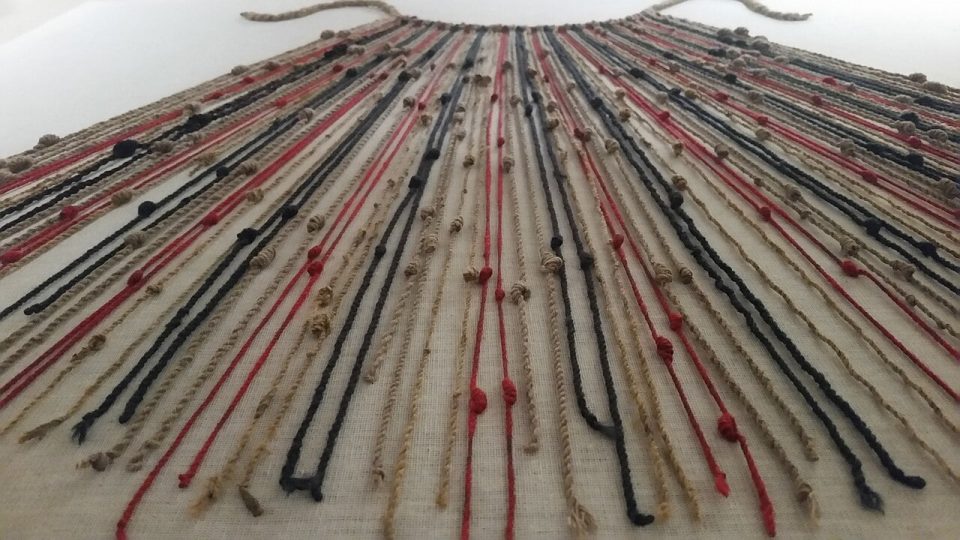
For over a thousand years, people living in the Andes Mountains of South America used Inca recording devices called a “khipu” (also spelled as “quipu” and pronounced “key-poo”). This tool helped them record and share information.
A khipu was a bundle of strings, often made from cotton or animal fibers. Each khipu held different types of information.
By using different colors, the way the strings were arranged, and the number of knots, the khipu stored important details in a unique way. This tool served as a record-keeper for various Andean cultures, helping them pass along messages and keep track of important matters.
Experts believe that many of the knots on khipus were used to represent numbers, though not all served this purpose.
A new study reveals a link between two significant khipus from history. One is the largest khipu ever discovered, and the other is among the most complex.
Specially-trained khipu makers
Khipus played a key role in the Inca Empire, which thrived from about 1438 CE to 1532 CE up until the Spanish conquest. The Inca left no written records, so khipus likely served as their primary tool for communication and record-keeping.
They were often crafted from cotton or fibers from camelids, such as llamas, alpacas, and camels. These fibers were sometimes dyed in various colors or left in their natural shades. Some khipus even included plant fibers or human hair.
The Inca Quipu, sometimes spelled “khipu,” was a unique and sophisticated system of record-keeping and communication used by the Inca civilization in pre-Columbian South America. It consisted of intricately knotted cords made from llama or alpaca wool, with various colors and… pic.twitter.com/2IimmIhxfY
— Archaeo – Histories (@archeohistories) January 20, 2024
Specially trained artisans, known as “khipukamayuqs,” carefully designed each khipu. They made specific choices about colors, how the fibers were spun and twisted, the way cords were attached, and the arrangement and type of knots. Moreover, each detail was intentional, giving each khipu its unique way of storing information.
Early Spanish writers documented that khipus were used for various numerical tasks. These included keeping track of goods in storage, recording population counts, and managing taxes and tributes owed to the empire.
Red or white “divider” cords to separate groups
For over a century, researchers have examined khipu features, aiming to identify patterns by viewing them collectively. Recently, this data has been digitized and made freely available through resources such as the Open Khipu Repository and the Khipu Field Guide.
Karen M. Thompson, a Khipu Field Guide (KFG) affiliate and research data specialist at The University of Melbourne, analyzed two specific khipus from northern Chile.
Originally documented in the 1970s by ethno-mathematician Marcia Ascher and anthropologist Robert Ascher, one of these khipus is the largest on record, spanning over five meters with more than 1,800 cords. The other khipu, similarly complex, includes nearly 600 cords arranged intricately.
Thompson noticed that both khipus used red and white “divider” cords to separate groups. In the larger khipu, these dividers marked ten groups of seven cords each. In the smaller khipu, they marked seven groups, each with ten cords, along with numerous additional cords branching off.
